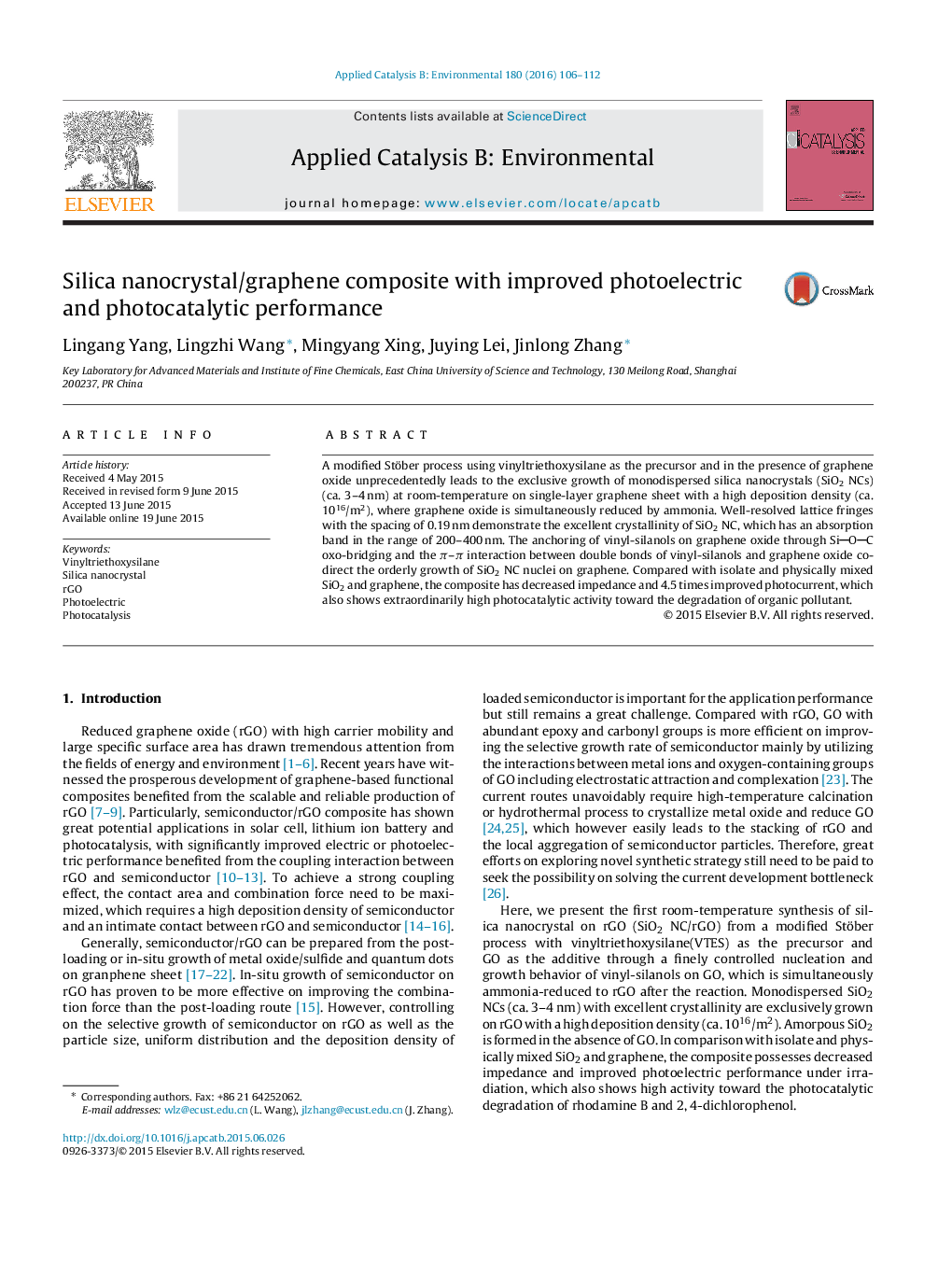| Article ID | Journal | Published Year | Pages | File Type |
|---|---|---|---|---|
| 45225 | Applied Catalysis B: Environmental | 2016 | 7 Pages |
•Silicon NCs/rGO is synthesized at room temperature from a modified Stöber process.•Monodispersed silicon NCs are exclusively and homogenously distributed on rGO.•Graphene oxide is simultaneously ammonia-reduced after the reaction.•The composite shows high photocatalytic degradation efficiency to RhB and 2, 4-DCP.
A modified Stöber process using vinyltriethoxysilane as the precursor and in the presence of graphene oxide unprecedentedly leads to the exclusive growth of monodispersed silica nanocrystals (SiO2 NCs) (ca. 3–4 nm) at room-temperature on single-layer graphene sheet with a high deposition density (ca. 1016/m2), where graphene oxide is simultaneously reduced by ammonia. Well-resolved lattice fringes with the spacing of 0.19 nm demonstrate the excellent crystallinity of SiO2 NC, which has an absorption band in the range of 200–400 nm. The anchoring of vinyl-silanols on graphene oxide through SiOC oxo-bridging and the π–π interaction between double bonds of vinyl-silanols and graphene oxide co-direct the orderly growth of SiO2 NC nuclei on graphene. Compared with isolate and physically mixed SiO2 and graphene, the composite has decreased impedance and 4.5 times improved photocurrent, which also shows extraordinarily high photocatalytic activity toward the degradation of organic pollutant.
Graphical abstractFigure optionsDownload full-size imageDownload as PowerPoint slide
